

The Structural Evolution and Driving Mechanism of Intercity Technology Transfer Networks in the Middle Reaches of the Yangtze River: Evidence from TERGM
Received date: 2024-03-19
Revised date: 2024-04-24
Online published: 2024-12-24
Technology transfer is an important way to promote technology sharing, optimize resource allocation, and improve the levels of innovation and overall efficiency. Existing research on regional technology transfer primarily focuses on eastern and developed regions of China, such as the Yangtze River Delta, Beijing-Tianjin-Hebei, Guangdong-Hong Kong-Macao, and the Pearl River Delta; therefore, inland regions are relatively underreported. The middle reaches of the Yangtze River are one of China's five national-level urban agglomerations. There is a gap between academic attention to its technology transfer system and the practice of regional development planning and construction. Against this backdrop, this study collected patent transfer information from 2010 to 2021 from the IncoPat patent service website and constructed intercity technology transfer networks in the middle reaches of the Yangtze River for four periods. Based on the application of network analysis methods and temporal exponential random graph models, the structural evolution and driving mechanism of intercity technology transfer in the middle reaches of the Yangtze River were quantitatively analyzed. The results showed that: (1) Changsha and Wuhan were consistently at the core of regional technology transfer. After the release of the urban agglomeration development plan for the middle reaches of the Yangtze River, Nanchang emerged as a new growth pole. The leading roles of Wuhan and Changsha in this region were primarily supported by technology diffusion, whereas Nanchang's technology diffusion and absorption were relatively balanced. The three central cities organized three technology transfer communities through a hub network-shaped structure that was highly coupled with provincial boundaries, and the inter-provincial technology flows were weak. (2) The intercity technology transfer network in the middle reaches of the Yangtze River gradually evolved to be characterized by both a core-periphery hierarchy and small-world clusters. However, the polarization of the network weakened, whereas the clustering coefficient and transfer efficiency increased. Moreover, the technology transfer paths present a stable trend with slight changes, suggesting incremental innovation. (3) Intercity technology transfers are not only affected by innovation size, intercity spatial distance, and the provincial boundary effect, but also by the endogenous mechanism of network self-organization. The reciprocity, activity, popularity, and hierarchical transitivity of intercity technology transfers positively affect network development, and the stability effect is stronger than the innovation effect in the network evolution process. Based on these findings, policy suggestions for optimizing technology transfer paths are proposed from the perspectives of promoting inter-provincial technology flows, enhancing spatial spillover and sector integration, and taking advantage of the network self-organizing laws of preferential attachment and clustering development. This study contributes to the literature by applying network econometric models for panel data to the analysis of the influential mechanism of innovation networks and corresponding the statistical properties of networks at different scales to the variable specification of endogenous and exogenous driving factors. Empirical research has verified the applicability of this analytical framework and methods in innovation geography, which could also provide new findings from the endogenous micro-mechanisms of the network to better understand the processes of intercity technology transfer.
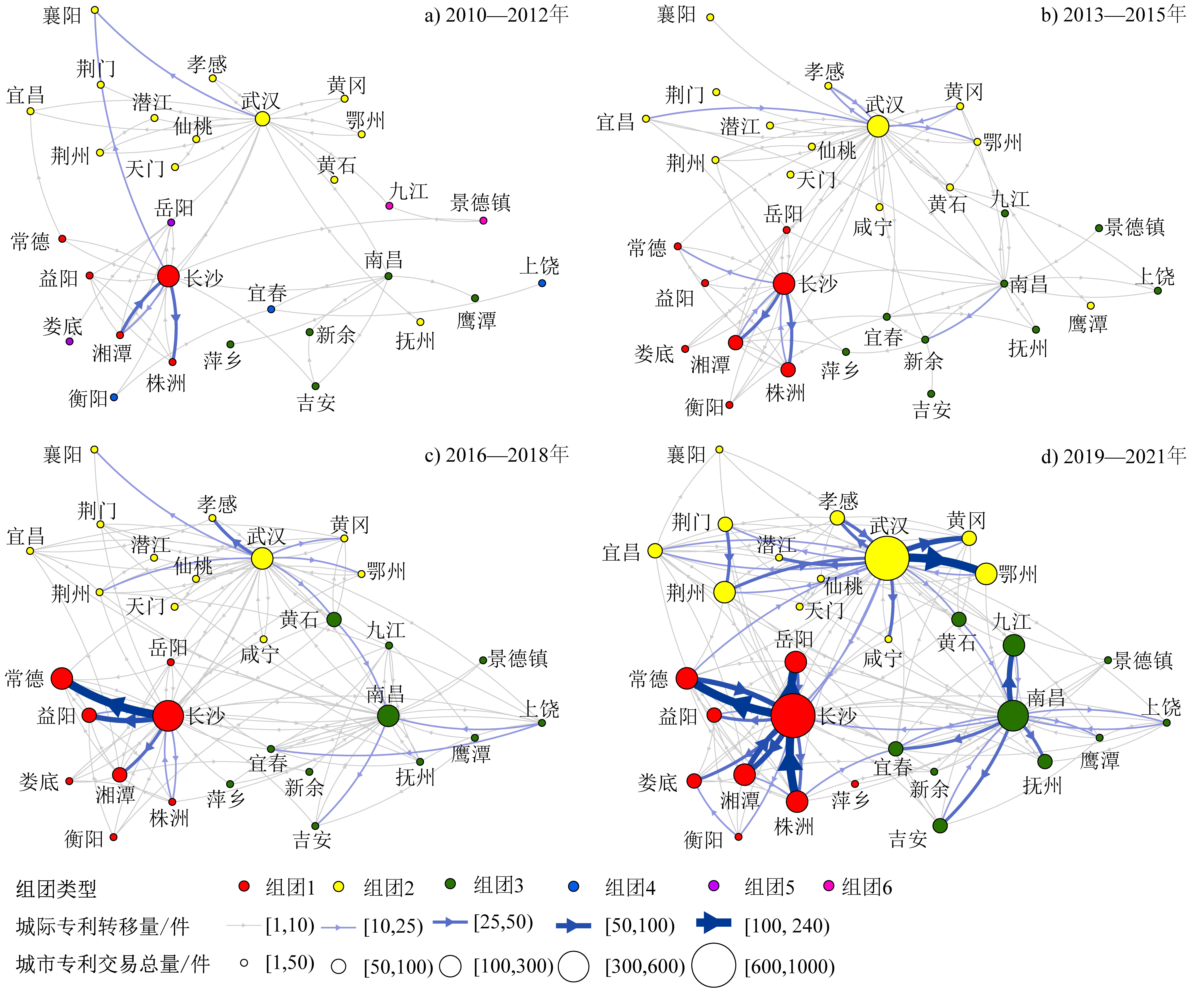
Wenbei Zhang , Yifan Lyu , Liang Dai , Huibin Zheng , Si Zou . The Structural Evolution and Driving Mechanism of Intercity Technology Transfer Networks in the Middle Reaches of the Yangtze River: Evidence from TERGM[J]. Tropical Geography, 2025 , 45(5) : 903 -915 . DOI: 10.13284/j.cnki.rddl.20240151
图1 长江中游城际技术转移网络演化 Fig.1 Evolutionary of intercity technology transfer networks in the middle reaches of the Yangtze River |
表1 长江中游城市专利转移量 (件)Table 1 Technology transfer volume of cities in the middle reaches of the Yangtze River |
| 城市 | 2010—2012年 | 2013—2015年 | 2016—2018年 | 2019—2021年 | 2010—2021年 | |||||||||
|---|---|---|---|---|---|---|---|---|---|---|---|---|---|---|
| 总交易量 | 净转出量 | 总交易量 | 净转出量 | 总交易量 | 净转出量 | 总交易量 | 净转出量 | 总交易量 | 净转出量 | |||||
| 长沙 | 102 | 34 | 185 | 43 | 352 | 172 | 961 | 33 | 1 600 | 282 | ||||
| 武汉 | 59 | 35 | 152 | 10 | 235 | 101 | 626 | 326 | 1 072 | 472 | ||||
| 南昌 | 13 | 5 | 47 | -1 | 110 | -4 | 387 | 167 | 557 | 167 | ||||
| 株洲 | 32 | -22 | 70 | -6 | 40 | 8 | 298 | 176 | 440 | 156 | ||||
| 常德 | 7 | -3 | 28 | -20 | 136 | -110 | 265 | -25 | 436 | -158 | ||||
| 岳阳 | 11 | -5 | 24 | 2 | 33 | -7 | 216 | -144 | 284 | -154 | ||||
| 鄂州 | 4 | -2 | 35 | 1 | 31 | -23 | 177 | -147 | 247 | -171 | ||||
| 湘潭 | 43 | 15 | 66 | -2 | 56 | -24 | 171 | 5 | 336 | -6 | ||||
| 九江 | 6 | -6 | 10 | 6 | 18 | -8 | 119 | -79 | 153 | -87 | ||||
| 荆州 | 7 | -3 | 13 | 1 | 36 | 6 | 117 | -19 | 173 | -15 | ||||
| 黄冈 | 2 | 0 | 19 | 5 | 22 | -8 | 100 | -66 | 143 | -69 | ||||
| 孝感 | 11 | -3 | 41 | -15 | 43 | -27 | 93 | 1 | 188 | -44 | ||||
| 宜春 | 10 | -8 | 17 | -9 | 31 | -9 | 92 | -26 | 150 | -52 | ||||
| 益阳 | 12 | -10 | 14 | -6 | 96 | -46 | 72 | -24 | 194 | -86 | ||||
| 宜昌 | 9 | -1 | 23 | 11 | 23 | 1 | 67 | 5 | 122 | 16 | ||||
| 吉安 | 4 | 0 | 1 | -1 | 23 | -9 | 65 | -13 | 93 | -23 | ||||
| 荆门 | 1 | -1 | 2 | -2 | 15 | -7 | 62 | 6 | 80 | -4 | ||||
| 抚州 | 1 | 1 | 4 | -2 | 20 | 0 | 60 | -48 | 85 | -49 | ||||
| 娄底 | 4 | 4 | 9 | -1 | 18 | -10 | 53 | -37 | 84 | -44 | ||||
| 黄石 | 5 | -5 | 6 | 0 | 53 | 9 | 51 | 21 | 115 | 25 | ||||
| 咸宁 | 0 | 0 | 7 | 3 | 14 | -8 | 50 | -46 | 71 | -51 | ||||
| 衡阳 | 10 | 2 | 17 | -3 | 11 | 9 | 43 | 11 | 81 | 19 | ||||
| 上饶 | 3 | 3 | 3 | -1 | 33 | 11 | 43 | -9 | 82 | 4 | ||||
| 潜江 | 4 | -4 | 6 | -4 | 11 | -11 | 29 | -29 | 50 | -48 | ||||
| 仙桃 | 1 | 1 | 5 | 1 | 7 | 5 | 26 | -2 | 39 | 5 | ||||
| 鹰潭 | 4 | -4 | 1 | 1 | 4 | 2 | 26 | -12 | 35 | -13 | ||||
| 新余 | 4 | 0 | 23 | -7 | 2 | 0 | 22 | -14 | 51 | -21 | ||||
| 襄阳 | 24 | -24 | 3 | -3 | 16 | -16 | 15 | -11 | 58 | -54 | ||||
| 景德镇 | 6 | 4 | 2 | 2 | 4 | 4 | 15 | 1 | 27 | 11 | ||||
| 天门 | 2 | -2 | 1 | -1 | 7 | -5 | 13 | -5 | 23 | -13 | ||||
| 萍乡 | 1 | -1 | 4 | -2 | 14 | 4 | 8 | 4 | 27 | 5 | ||||
表2 长江中游城际技术转移网络特征Table 2 Characteristics of intercity technology transfer networks in the middle reaches of the Yangtze River |
| 指标 | 2010—2012年 | 2013—2015年 | 2016—2018年 | 2019—2021年 |
|---|---|---|---|---|
| 节点数 | 31 | 31 | 31 | 31 |
| 边数/条 | 56 | 88 | 123 | 162 |
| 网络密度 | 0.057 | 0.091 | 0.129 | 0.171 |
| 平均度 | 1.710 | 2.742 | 3.871 | 5.129 |
| 平均加权度 | 12.968 | 13.516 | 48.839 | 140.065 |
| 度中心势 | 0.474 | 0.530 | 0.508 | 0.503 |
| 出度中心势 | 0.458 | 0.512 | 0.491 | 0.487 |
| 入度中心势 | 0.258 | 0.343 | 0.322 | 0.301 |
| 互惠性 | 0.262 | 0.364 | 0.371 | 0.383 |
| 度相关性 | -0.324 | -0.312 | -0.303 | -0.246 |
| 平均路径长度 | 2.375 | 2.167 | 2.048 | 1.867 |
| 全局集聚系数 | 0.116 | 0.181 | 0.255 | 0.330 |
| 与前期网络的QAP系数 | — | 0.559 | 0.681 | 0.687 |
表3 动态指数随机图的统计量Table 3 Statistics of temporal exponential random graph models |
| 类型 | 统计量 | 局部构型 | 实际解释 | |
|---|---|---|---|---|
| 基础项 | 边 | edges |  | 产生技术转移的基准倾向,类似于常数项 |
| 城市节点属性 | 发送者效应 | nodeocov(pat) |  | 本地创新规模影响城市技术输出规模 |
| 接收者效应 | nodeicov(pat) |  | 本地创新规模影响城市技术输入规模 | |
| 城际邻近关系 | 趋同性 | nodematch(pro) |  | 组织、地理邻近影响城际技术转移关系的形成 |
| 协网络 | edgecov(geo) |  | ||
| 互惠效应 | 当期互惠性 | mutual |  | 单向技术转移在本期获得回馈互惠的倾向 |
| 延迟互惠性 | delrecip |  | 单向技术转移在下期获得回馈互惠的倾向 | |
| 结构依赖效应 | 扩张性 | gwodegree |  | 城市技术输出关系呈放射状的星型分布 |
| 聚敛性 | gwidegree | 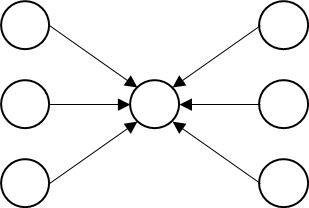 | 城市技术输入关系呈收敛状的星型分布 | |
| 传递性 | ttriple | 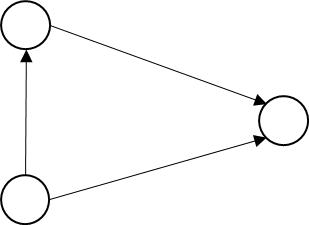 | 3个城市间存在等级传递式的技术转移关系 | |
| 循环性 | ctriple | 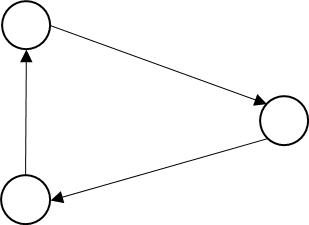 | 3个城市间存在扁平循环式的技术转移关系 | |
| 时间依赖效应 | 稳定性 | stability | 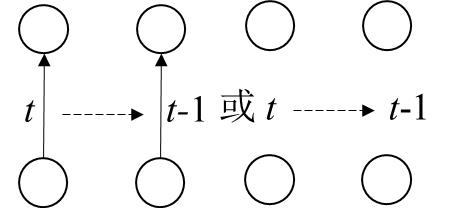 | 两城市间技术转移关系保持不变的倾向 |
| 创新性 | innovation | 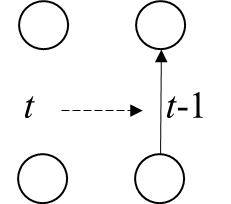 | 两城市间技术转移关系从无到有的倾向 | |
表4 动态指数随机图模型的拟合结果Table 4 Fitting results of temporal exponential random graph models |
| 统计量 | 模型1 | 模型2 | 模型3 | 模型4 | 模型5 | 模型6 |
|---|---|---|---|---|---|---|
| edges | -14.122***(1.096) | -13.047***(1.076) | -12.272***(1.187) | -14.131***(1.374) | -13.997***(1.405) | -10.479***(1.503) |
| nodeocov(pat) | 1.240***(0.066) | 1.132***(0.069) | 1.147***(0.080) | 1.254***(0.089) | 1.216***(0.098) | 1.071***(0.101) |
| nodeicov(pat) | 0.993***(0.063) | 0.845***(0.074) | 0.685***(0.083) | 0.786***(0.093) | 0.802***(0.099) | 0.704***(0.101) |
| nodematch(pro) | 1.663***(0.166) | 1.492***(0.162) | 1.313***(0.174) | 1.356***(0.183) | 1.336***(0.182) | 1.190***(0.184) |
| edgecov(geo) | -1.380***(0.145) | -1.202***(0.142) | -1.134***(0.151) | -1.140***(0.155) | -1.142***(0.157) | -1.082***(0.164) |
| mutual | 0.868***(0.218) | 0.859***(0.228) | 0.756**(0.233) | 0.783***(0.236) | 0.399(0.268) | |
| delrecip | 0.944***(0.180) | 0.862***(0.192) | 0.849***(0.185) | 0.603**(0.229) | ||
| gwidegree | 0.947*(0.399) | 1.022*(0.399) | 0.798*(0.405) | |||
| gwodegree | 1.189*(0.474) | 1.300*(0.483) | 1.193*(0.483) | |||
| ttriple | 0.081**(0.010) | 0.087**(0.010) | ||||
| ctriple | -0.204(0.123) | -0.209(0.130) | ||||
| stability | 0.917***(0.104) | |||||
| innovation | 0.549**(0.194) | |||||
| AIC | 1 692 | 1 683 | 1 500 | 1 486 | 1 487 | 1 403 |
| BIC | 1 725 | 1 732 | 1 553 | 1 555 | 1 571 | 1 495 |
| Log Likelihood | -841 | -836 | -743 | -734 | -733 | -689 |
|
1 资料来源:https://www.gov.cn/xinwen/2022-10/25/content_5721685.htm
2 https://www.incopat.com/
张文蓓:数据收集、论文初稿撰写;
吕一凡:负责数据处理、网络分析与模拟;
戴 靓:负责思路设计、论文修改与校对;
郑慧彬:负责数据收集、网络可视化;
邹 思:负责数据收集与校对。
|
安頔,胡映洁,万勇. 2024. 中国城市信息流网络空间结构特征研究:基于降噪处理与有向网络分析方法. 世界地理研究,33(1):134-148.
An Di, Hu Yingjie, and Wan Yong. 2024. Analysis on Characteristics of Urban Information Network Structure in China: A Method Based on Denoising and Directed Network. World Regional Studies, 33(1): 134-148.
|
|
毕鹏翔,唐子来,李紫玥. 2022. 创新一体化进程中的长三角城市网络演化:基于技术转移的视角. 城市规划学刊,(1):35-43.
Bi Pengxiang, Tang Zilai, and Li Ziyue. 2022. The Evolution of the Yangtze River Delta City Network in the Process of Innovation Integration: A Perspective from Technology Transfer. Urban Planning Forum, (1): 35-43.
|
|
Bombelli A, Santos B F, and Tavasszy L. 2020. Analysis of the Air Cargo Transport Network Using a Complex Network Theory Perspective. Transportation Research Part E: Logistics and Transportation Review, 138: 101959.
|
|
Broekel T and Hartog M. 2013 Determinants of Cross-Regional R&D Collaboration Networks: An Application of Exponential Random Graph Model. In: Scherngell T. The Geography of Networks and R&D Collaborations. Berlin&Heidelberg&New York: Springer. 49-70.
|
|
Crespo J and Vicente J. 2016. Proximity and Distance in Knowledge Relationships: From Micro to Structural Considerations Based on Territorial Knowledge Dynamics (TKDs). Regional Studies, 50(2): 202-219.
|
|
戴靓,丁子军,曹湛,吴康,王瑞霖. 2023. 长三角地区城市协同创新网络的演化特征及其驱动力. 资源科学,45(5):1006-1019.
Dai Liang, Ding Zijun, Cao Zhan, Wu Kang, and Wang Ruilin. 2023. Change and Driving Forces of Intercity Collaborative Innovation Networks in the Yangtze River Delta Region. Resources Science, 45(5): 1006-1019.
|
|
段德忠,杜德斌,谌颖,翟庆华. 2018. 中国城市创新网络的时空复杂性及生长机制研究. 地理科学,38(11):1759-1768.
Duan Dezhong, Du Debin, Chen Ying, and Zhai Qinghua. 2018. Spatial-Temporal Complexity and Growth Mechanism of City Innovation Network in China. Scientia Geographica Sinica, 38(11): 1759-1768.
|
|
段德忠,金红. 2023. 中国城市绿色技术扩散的时空过程与形成机制. 地理学报,78(8):2001-2018.
Duan Dezhong and Jin Hong. 2023. Spatiotemporal Process and Driving Factors of Green Technology Diffusion in Chinese Cities. Acta Geographica Sinica, 78(8): 2001-2018.
|
|
Du D, Wang J, Li J, and Huang J. 2024. Evolution of China's Intercity Venture Capital Network: Preferential Attachment vs. Path Dependence. Cities, 148: 10487.
|
|
桂钦昌,杜德斌,刘承良,侯纯光. 2022. 基于随机行动者模型的全球科学合作网络演化研究. 地理研究,41(10):2631-2647.
Gui Qinchang, Du Debin, Liu Chengliang, and Hou Chunguang. 2022. The Evolution of the Global Scientific Collaboration Network: A Stochastic Actor-Oriented Model Approach. Geographical Research, 41(10): 2631-2647.
|
|
国务院. 2006. 国家中长期科学和技术发展规划纲要(2006—2020年). (2006-02-09)[2024-02-01]. https://www.gov.cn/gongbao/content/2006/content_240244.htm.
State Council. 2006. Outline of the National Program for Long-and-Medium-Term Scientific and Technological Development (2006-2020). (2006-02-09) [2024-02-01]. https://www.gov.cn/gongbao/content/2006/content_240244.htm.
|
|
国务院. 2015. 国务院关于长江中游城市群发展规划的批复. (2015-03-26)[2024-02-01]. https://www.gov.cn/gongbao/content/2015/content_2847767.htm.
State Council. 2015. Official Reply of the State Council on the Development Plan for the Urban Agglomeration in the Middle Reaches of the Yangtze River. (2015-03-26) [2024-02-01]. https://www.gov.cn/gongbao/content/2015/content_2847767.htm.
|
|
国务院. 2017. 国家技术转移体系建设方案.(2017-09-26)[2024-02-01]. https://www.gov.cn/zhengce/zhengceku/2017-09/26/content_5227667.htm.
State Council. 2017. Plan for the Development of the National Technology Transfer System. (2017-09-26) [2024-02-01]. https://www.gov.cn/zhengce/zhengceku/2017-09/26/content_5227667.htm.
|
|
Hanneke S, Fu W, and Xing E. 2010. Discrete Temporal Models of Social Networks. Electronic Journal of Statistics, 4: 585-605.
|
|
黄晓东,马海涛,苗长虹. 2021. 基于创新企业的中国城市网络联系特征. 地理学报,76(4):835-852.
Huang Xiaodong, Ma Haitao, and Miao Changhong. 2021. Connectivity Characteristics for City Networks in China Based on Innovative Enterprises. Acta Geographica Sinica, 76(4): 835-852.
|
|
Hunter D R. 2007. Curved Exponential Family Models for Social Networks. Social Networks, 29(2): 216-230.
|
|
Lata R, Scherngell T, and Brenner T. 2015. Integration Processes in European Research and Development: A Comparative Spatial Interaction Approach Using Project-Based Research and Development Networks, Co-Patent Networks and Co-Publication Networks. Geographical Analysis, 47(4): 349-375.
|
|
Leifeld P and Cranmer S J. 2019. A Theoretical and Empirical Comparison of the Temporal Exponential Random Graph Model and the Stochastic Actor-Oriented Model. Network Science, 7(1): 20-51.
|
|
李琳,彭璨. 2020. 长江中游城市群协同创新空间关联网络结构时空演变研究. 人文地理,35(5):94-102.
Li Lin and Peng Can. 2020. Study on the Structure of Collaborative Innovation Network of Urban Agglomeration in the Middle Reaches of the Yangtze River and Its Evolution. Human Geography, 35(5): 94-102.
|
|
刘承良,管明明,段德忠. 2018. 中国城际技术转移网络的空间格局及影响因素. 地理学报,73(8):1462-1477.
Liu Chengliang, Guan Mingming, and Duan Dezhong. 2018. Spatial Pattern and Influential Mechanism of Interurban Technology Transfer Network in China. Acta Geographica Sinica, 73(8): 1462-1477.
|
|
刘林青,闫小斐,杨理斯,宋敏. 2021. 国际贸易依赖网络的演化及内生机制研究. 中国工业经济,(2):98-116.
Liu Linqing, Yan Xiaofei, Yang Lisi, and Song Min. 2021. Research on the Evolution and Endogenous Mechanism of International Trade Dependence Network. China Industrial Economics, (2): 98-116.
|
|
Liu W, Tao Y, and Bi K. 2022. Capturing Information on Global Knowledge Flows from Patent Transfers: An Empirical Study Using USPTO Patents. Research Policy, 51(5): 104509.
|
|
刘耀彬,孙敏. 2022. 中国城市技术转移网络空间格局分析:基于企业控股与专利转移的视角. 地理科学,42(10):1695-1705.
Liu Yaobin and Sun Min. 2022. Spatial Pattern of Interurban Technology Transfer Network in China: A Case Study from the Corporate Holding and Patent Transfer. Scientia Geographica Sinica, 42(10): 1695-1705.
|
|
栾心晨,朱晟君,毛熙彦. 2023. 多尺度视角下技术转移网络对城市创新能力的影响. 地理科学,43(1):11-19.
Luan Xinchen, Zhu Shengjun, and Mao Xiyan. 2023. Impact of Technology Transfer Network on Urban Innovation Capability from a Multi-Scale Perspective. Scientia Geographica Sinica, 43(1): 11-19.
|
|
Lusher D, Koskinen J, and Robins G. 2013. Exponential Random Graph Models for Social Networks: Theory, Methods, and Applications. Cambridge: Cambridge University Press, 9-15.
|
|
吕拉昌,赵彩云. 2021. 中国城市创新地理研究述评与展望. 经济地理,41(3):16-27.
Lyu Lachang and Zhao Caiyun. 2021. Review and Prospect of the Urban Innovation Geography of China. Economic Geography, 41(3): 16-27.
|
|
Ma D, Yu Q, Li J, and Ge M. 2021. Innovation Diffusion Enabler or Barrier: An Investigation of International Patenting Based on Temporal Exponential Random Graph Models. Technology in Society, 64: 101456.
|
|
Ma H, Wei Y D, Dai L, and Xu X. 2022. The Proximity and Dynamics of Intercity Technology Transfers in the Guangdong–Hong Kong–Macau Greater Bay Area: Evidence from Patent Transfer Networks. Environment and Planning A: Economy and Space, 54(7): 1432-1449.
|
|
Malliaros F D and Vazirgiannis M. 2013. Clustering and Community Detection in Directed Networks: A Survey. Physics Reports, 533(4): 95-142.
|
|
Palak R and Wojtkiewicz K. 2024. A Centralization Measure for Social Networks Assessment. Cybernetics and Systems, 55(3): 654-667.
|
|
尚勇敏,王振,宓泽锋,林岚. 2021. 长三角绿色技术创新网络结构特征与优化策略. 长江流域资源与环境,30(9):2061-2069.
Shang Yongmin, Wang Zhen, Mi Zefeng, and Lin Lan. 2021. Structural Characteristics and Optimization Strategies of Green Technology Innovation Network in the Yangtze River Delta. Resources and Environment in the Yangtze Basin, 30(9): 2061-2069.
|
|
王秋玉,曾刚,杨文龙,叶雷. 2022. 长江经济带技术转移网络结构及影响机制探究. 长江流域资源与环境,31(1):1-12.
Wang Qiuyu, Zeng Gang, Yang Wenlong, and Ye Lei. 2022. Research on Structure and Effect Mechanism of Technology Transfer Network in Yangtze River Economic Belt. Resources and Environment in the Yangtze Basin, 31(1): 1-12.
|
|
徐莹,邹芳,姜李丹,张琳,黄颖. 2022. 多维邻近性对技术创新合作绩效的影响效应:以长江中游城市群合作网络为例. 科技管理研究,42(1):51-61.
Xu Ying, Zou Fang, Jiang Lidan, Zhang Lin, and Huang Ying. 2022. The Effect of Multidimensional Proximity on Technology Innovation Cooperation Performance: Taking the Middle Reaches of Yangtze River Urban Agglomeration Cooperation Network as an Example. Science and Technology Management Research, 42(1): 51-61.
|
|
杨文龙,杜德斌,盛垒. 2022. 全球商品贸易网络生长特征及动力机制. 资源科学,44(3):508-522.
Yang Wenlong, Du Debin, and Sheng Lei. 2022. Growth Characteristics of the Global Commodity Trade Network and Its Dynamic Mechanism. Resources Science, 44(3): 508-522.
|
|
周灿,曾刚,尚勇敏. 2019. 演化经济地理学视角下创新网络研究进展与展望. 经济地理,39(5):27-36.
Zhou Can, Zeng Gang, and Shang Yongmin. 2019. Progress and Prospect of Research on Innovation Networks: A Perspective from Evolutionary Economic Geography. Economic Geography, 39(5): 27-36.
|
/
| 〈 |
|
〉 |